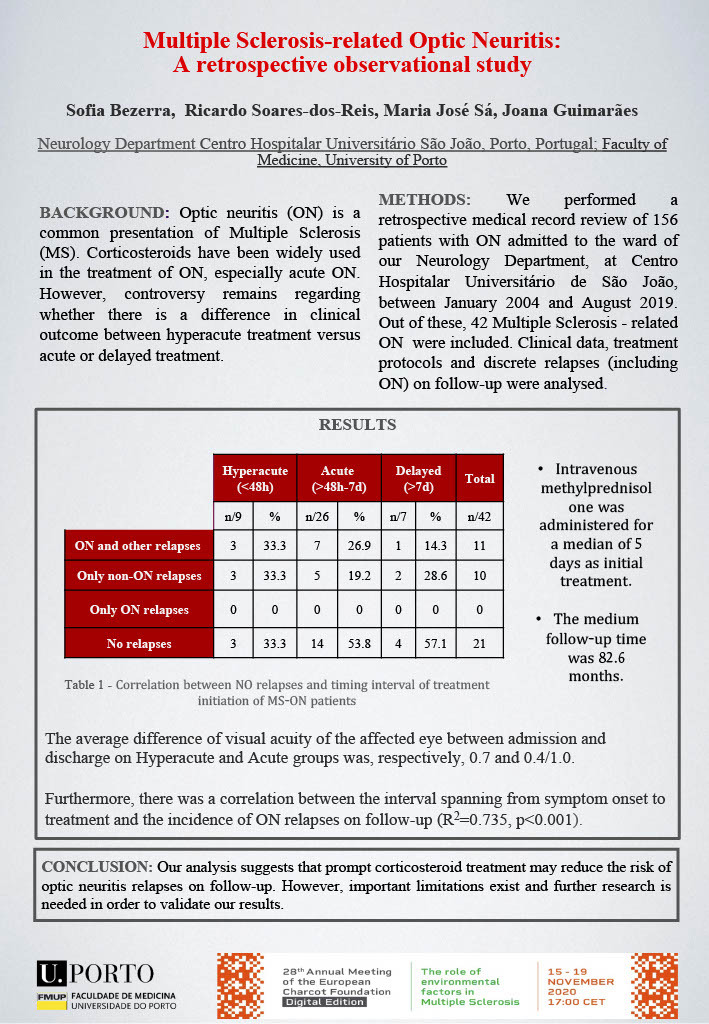Multiple Sclerosis-related Optic Neuritis: A retrospective observational study
Abstract
Background:
Optic neuritis (ON) is an inflammatory disorder leading to sudden painful monocular visual injury, that takes place over the course of several hours or days. It is mainly idiopathic in nature; however, it can be associated with variable causes. Out of these, Multiple Sclerosis (MS) is the most common cause of demyelinating ON.
Corticosteroids have been widely used in the treatment of ON, and subsequent studies have further clarified its impact in the treatment of acute ON. However, it remains controversial if there is difference on hyperacute treatment versus acute or delayed treatment, associated to clinical ON outcome of these patients.
We propose to review the medical records in patients admitted to the ward of Neurology Department, and evaluate a correlation between clinical outcome and timing interval of treatment initiation, as specified: Hyperacute: within 48h of onset; Acute: within 48h - 7 days; Delayed: more than 7 days.
Methods:
We performed a retrospective review of the medical data comprised of 156 patients with ON admitted to the ward of our Neurology Department, at Centro Hospitalar Universitário de São João, between January 2004 and August 2019. It was analyzed clinical data, and treatment protocols, as well as neurologic and optic neuropathy in separated events in follow-up.
Results:
Our cohort comprised 156 patients, out of these 44- Multiple Sclerosis- related ON (28.2%). IV methylprednisolone was administered for a median of 5 days as initial treatment. Subsequently, 2 patients were excluded, because there was no information available regarding the treatment with corticosteroids. The medium follow-up time was 82.6 months.
Hyperacute treatment was performed in 9 patients. None of these patients had ON isolated event on follow-up. 3 out of 9 patients didn’t show relapse event, when performed hyperacute treatment. In what concerns acute initial treatment, out of 26 patients, none of them have presented with ON event on follow-up. Out of these, 14 (53.8%) didn’t show relapse event. The average difference of visual acuity of the affected eye between
admission and discharge on these two groups was, respectively, 0,7 and 0,4/ 1.0.
Regarding delayed treatment, this group comprises 7 patients: 4 patients (57.1%) didn’t present any relapse event, and none of them presented ON event on follow-up.
Furthermore, Pearson’s correlation analysis was used for the variable’s interval between symptoms and treatment, and optic neuritis events at follow-up. A strong positive correlation was found between the variables, being observed that the increase in the interval between symptoms and the onset of the treatment is associated with a higher risk of optic neuritis events in the follow-up (R2=0.54, p<0.001).
Conclusion:
Considering that it could demonstrate important implications in clinical practice, our analysis suggests that prompt corticosteroid treatment may reduce the risk of optic neuritis relapses on follow-up. However, important limitations exist and further research is needed in order to validate our results.

